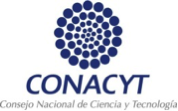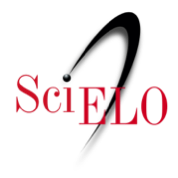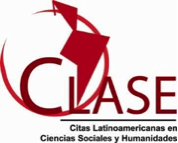CALL FOR PAPERS 2024
CALL FOR PAPERS 2024
Intervención, Revista Internacional de Conservación, Restauración y Museología (in English: Intervention, International Journal of Conservation, Restoration and Museology) published by the Escuela Nacional de Conservación, Restauración y Museografía of the Instituto Nacional de Antropología e Historia (ENCRyM-INAH, Mexico) is a digital, bilingual, open-access, peer-reviewed and indexed biannual publication. It aims to promote the dissemination of knowledge, advances, and thinking around the research, practice, and professional training in the fields and disciplines related to conservation, restoration, museology, exhibition design, management, and study of cultural heritage among the national and international academic community, with a stress in Latin America.
Intervención invites academics from national and international institutions, whether consolidated or emerging professionals, to present unpublished, original contributions that have not been simultaneously postulated somewhere else, to be published in 2024, in accordance with the following editorial guidelines:
Structure
All contributions must have a conventional structure in accordance with the standards of citable scientific journals that include objective, duly referenced analytical development, conclusions, references (in APA format), abstract, keywords, and authors' curricular synthesis. The characteristics and length of the submission will depend on the type of contribution.
Types of contribution
Essay
A mostly conceptual or theoretical argumentative text. It focuses on proposing an original idea or argument, generally around a very specific aspect, which is elaborated through critical debate with the literature of the field. Its tone and style are often more narrative and personal than a research article's. It may or may not have subsections to structure the narrative thread, depending on the style of the author. You do not need to explicitly address the methodology used. Its length is a minimum of 10 and a maximum of 15 pages (without references, annexes, or graphic resources). This type of submission is refereed by double-blind peer review.
Research article
Text that presents, in a structured and rigorous manner, the solution to a research problem. It may or may not be based on fieldwork (depending on the nature of the research), but it must incorporate comprehensive content: context, background, research question (or hypothesis if applicable), state-of-the-art, methodology, and research results. Therefore, it must have a series of subsections for the proper development of the different elements. Regarding its approach, it can cover both case studies, comparative studies, and multi-case studies. Its length is a minimum of 18 and a maximum of 20 pages (without references, annexes, or graphic resources). This type of submission is refereed by double-blind peer review.
Academic report
It has a predominantly technical and documentary character, to socialize the processes, decisions, and results, related to a practical intervention, the development of a project, or applied research. It is, therefore, a memory of sorts about a professional experience that has already taken place. It includes aspects of the context, background, and/or theoretical balance, but its fundamental approach is communicating the processes and results of the intervention, project, or applied research. Its length is a minimum of 10 and a maximum of 15 pages (without references, annexes, or graphic resources). This type of submission is refereed by double-blind peer review.
Showcase
An analytical note about a conservation, restoration, or museology process for information purposes. The length of the document is between 3 and 5 pages, excluding references, annexes, and graphic resources, and may include up to 12 figures. This type of application is not refereed by double-blind peer review, but it is internally evaluated by a member of the Editorial Committee of Intervención journal (CERI, for its acronym in Spanish).
Reviews
Review of a book, event, or exhibition that, while describing or relating its main constituent elements, makes a critical evaluation of said elements; both in its strengths, as in controversial or perfectible aspects, or those that merit further discussion or deepening. Therefore, the reviews must maintain an analytical balance to avoid becoming apologies to the authors, texts, or events reviewed. Its length is a minimum of 3 and a maximum of 5 pages (without references, annexes, or graphic resources). This type of application is not refereed by double-blind peer review, but it is internally evaluated by a member of the Editorial Committee of Intervención journal (CERI, for its acronym in Spanish).
THE PAPERS THAT EXCEED THE STATED EXTENSIONS MENTIONED WILL NOT BE ACCEPTED
Review process
All contributions will be subject to evaluation (internal pre-review) by the CERI in accordance with Intervención’s editorial Guidelines (IEG). Applications that do not meet the minimum requirements of an academic contribution will not proceed to the peer review stage, and the author will be notified. Essays, Research Articles, and Academic Reports that pass the first, internal, review, will be evaluated by external ─ double-blind ─ specialists in accordance with the IEG. Conflicts of interest should be noted in the review, if any. The CERI’s decision will be final and the authors will be notified in writing, who, where appropriate, will adjust the contributions to the results of the review. Once the corrections have been made, a comparison will be made to verify that the author has complied with the recommendations and mandatory adjustments, depending on the case.
Guidelines for preparing the manuscript
In order to proceed to the peer-review and publication processes, the author’s submission must follow these requirements:
Title
Summary
Written in English, with a maximum length of 120 words.
Keywords
Between 3 and 5 concepts in English.
Text
- Written in Spanish or English, in a Microsoft Word or similar word processor, 12-point Arial font, 1.5 spacing, letter-size page with 2.5 cm margins on each side. Main subtitles in bold, second-level subtitles in bold italics, and third-level subtitles in italics.
- Citations referenced according to the APA system (example: Ramírez, 2002, p. 45). Verbatim quotes with an extension equal to or less than five lines will be presented between quotation marks embedded in the text; those greater than five lines, in paragraph by side, with a left indent in 11-point font.
- Footnotes are numbered consecutively and only if they are strictly necessary as a clarification or complement.
References
Presented at the end of the text in alphabetical order following the APA system.
Curriculum synthesis
Must contain: complete name of the author or authors, institutional affiliation or private, email, academic training, outstanding career, projects, research, and recent publications in a maximum of 120 words. Please include your ORCID number.
Image/figure captions
Numbered according to the indications given in the text, with a caption that specifies the content, author, year of production, credits, and/or source.
Electronic files of images/figures
Up to twelve figures (diagrams, formulas, tables, photos, drawings, maps, plans, etc.) with a size of 29 cm on their largest side, in tiff format and with a resolution of 300 dpi, which must be uploaded separately in numbered files consecutively according to their order of appearance, indicating their exact location within the text. A photograph of 28 cm high at 300 dpi for the cover of the article. For more information see the IEG.
The tables, diagrams, formulas, and any image/figure that includes text, must be delivered in editable format to make the copy editing, translation, and publication design.
The author/s will be responsible for requesting the reproduction permissions of each of the figures included in their text to the agencies or institutions that protect or have the rights of these. The figures without reproduction rights (photographs, diagrams, plans, tables, and so on) will be removed from the text.
Delivery/submissions
Submission is only possible in electronic version through our Open Journal System (OJS). Submission must be complete, including text (title, abstract, keywords, body of the text, references -in APA format-), list of figures), images (if applicable), author data, and author bio.
Conflicts of interest
If the applicants identify any relationship between the authors of the article, editors, or reviewers from which a conflict of interest could arise, they must email revista_intervencion@encrym.edu.mx to evaluate the case. Intervención adheres to the standards of the Committee on Publication Ethics (COPE) to guarantee the transparency, independence, objectivity, credibility, and scientific rigor of the published works.
Queries
Editorial Committee of Intervención journal, National School of Conservation, Restoration and Museography. General Anaya 187, col. San Diego Churubusco, C.P. 04120, Mexico City.
Mail: revista_intervencion@encrym.edu.mx
All contributions are subject to style editing and subsequent translation into the Spanish language and, therefore must comply with the editorial standards of Intervención, CERI, ENCRyM, and INAH.
Intervention is a public, non-profit academic publication. Each one of the processes is carried out with the public budget of the INAH, no process is charged to the authors. The author must undertake to comply with the correction, revision, and approval times of each one of the editorial processes. Once the publication is accepted, the author must sign a letter of Assignment of Patrimonial Rights (CDP, by its acronym in Spanish) to INAH. Once this CDP letter is signed, the contribution cannot be withdrawn.
The published articles are registered under the Creative Commons license: Attribution 4.0 International (CC BY 4.0)
The content of the contributions and the reproduction rights of the included figures are responsibility of the author.




















